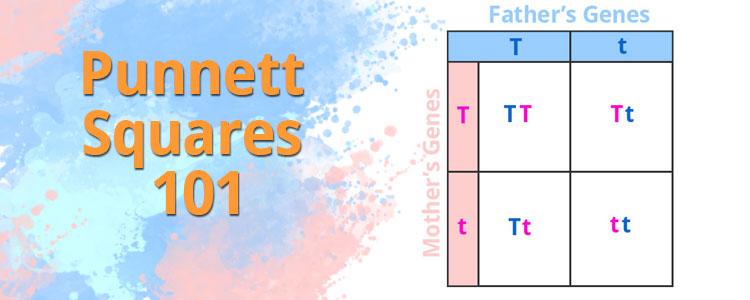Breeding Basics 101 – How to draw a Punnett Square – A-Grade Hydroponics

Lots of you emailed in asking for us to start the discussion around breeding.
So, let’s start with something basic that we can all wrap our heads around, Punnett squares!
Punnett squares are a theoretical tool used to determine specific traits passed on from parent to progeny, devised by Reginald C. Punnett this technique can show us probable outcomes of offspring having specific genotypes and phenotypes in accordance with Mendelian inheritance.
Genotype, is an organisms’ genetic makeup or allelic combination, technically genotypes can only be determined via biological testing, genotypes are inherited traits that contain hereditary information from either parent in a subsequent cross.
Phenotype, is what you see, they are visually expressed when combined with environmental factors, examples of phenotypes are the traits we are searching for when using the Punnett square tool.
Before you fill in a Punnett square let’s explore some terminology;
Haploid (1n) = number of chromosome is 10
Diploid (2n) = number of chromosomes is 20
Triploid (3n) = number of chromosomes is 30
Tetraploid (4n) = number of chromosomes is 40
Each single chromosome is home to hundreds of *alleles (genes) all of which have the ability to affect the development and physical expression of the plant.
When filling out a Punnett square, each *allele (trait) is either dominant or recessive, to keep it simple let’s pick height, so we have tall and short in the mix, capital T is dominant and the lowercase t is recessive.
On the left side, we always fill out the mother’s genes, on the top we add the fathers, we will highlight the genes to make this easier to follow.

We start completing the square adding the mother’s trait/s (allele)followed by the fathers trait, the traits we have selected are quite simplified to make this exercise readable.
T = Tall
t = Short

Let’s assume the mother has a dominant gene and a recessive gene, and the same for the father.

After doing a test cross, we can now see;
- 50% of the progeny will have both dominant and recessive traits (Tt)
- 25% of the progeny will show only dominant traits (TT)
- 25% of the progeny will only show recessive traits (tt)
Offspring probabilities would look like this:
50% (Tt) : 25% (TT) : 25% (tt)
Genotype ratio 1:2:1 – Phenotype ratio is 2:1
I hope you enjoyed this topic, its super basic in the grand scheme of things, but if you guys want it I’ll keep on writing, stay tuned for the follow up I think the breeding topic could go for quite a while.
#growwithus




